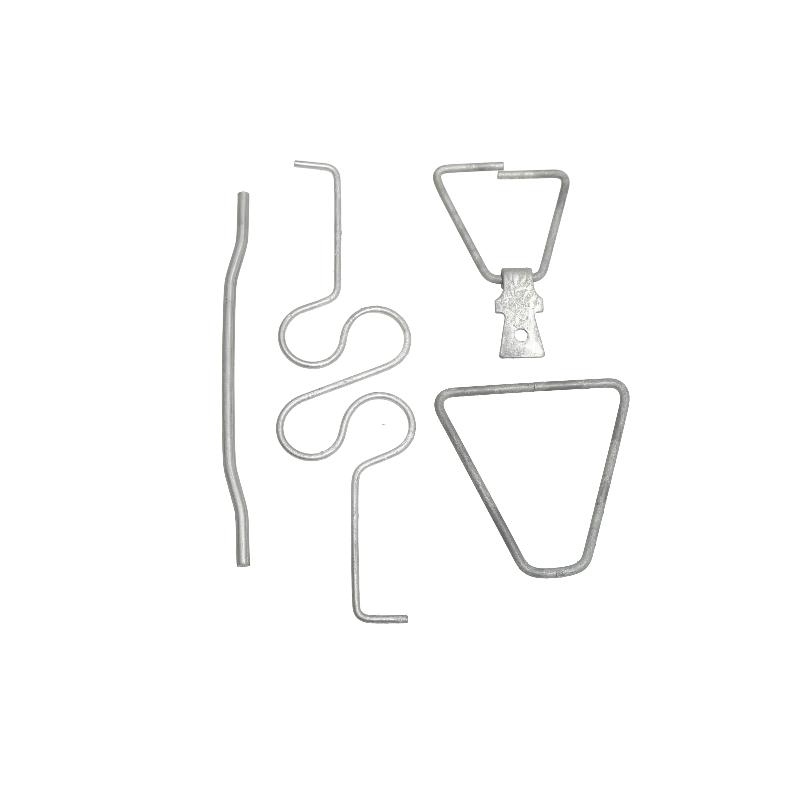
- Mobile Phone
- +8613931874955
- sales@cntcmetal.com
Enhanced Performance and Durability of Copper Coil Springs for Various Applications in Engineering
Understanding Copper Coil Springs A Comprehensive Overview
Copper coil springs, though less common than their steel or alloy counterparts, offer unique properties that make them valuable in various applications. This article delves into the characteristics, benefits, manufacturing processes, and applications of copper coil springs, providing a comprehensive overview of their significance in modern engineering.
Characteristics of Copper Coil Springs
Copper is well-known for its excellent electrical conductivity, thermal resistance, and corrosion resistance. Although its mechanical properties do not rival those of steel, copper's ability to withstand high temperatures without degrading is a notable advantage. Copper coil springs can be manufactured to exhibit different stiffness levels, making them versatile in design and function. The modulus of elasticity of copper allows for a certain degree of flexibility while maintaining structural integrity, which is critical in applications where movement and load-bearing are essential.
Benefits of Copper Coil Springs
One of the most significant benefits of copper coil springs is their high thermal and electrical conductivity. This makes them ideal for applications in electronics and electrical engineering, where efficient heat dissipation and electrical connectivity are paramount. Additionally, copper's natural resistance to corrosion extends the lifespan of coil springs used in harsh environments, ensuring durability and reliability over time.
Moreover, the aesthetic appeal of copper cannot be overlooked. Its distinctive reddish hue and natural patina can enhance the visual aspect of products, making copper coil springs a popular choice in artistic and decorative applications.
Manufacturing Processes
The manufacturing of copper coil springs involves several key steps, including material selection, forming, heat treatment, and finishing. Typically, high-quality copper alloys such as C26000 (brass) are used due to their favorable mechanical properties.
copper coil spring

1. Material Selection Choosing the right copper alloy is critical. Each alloy has distinct properties that can affect the spring's performance.
2. Forming The wire is initially drawn to the desired diameter. Following this, the wire is wound into a coil shape using specialized machinery. The winding process determines the spring's characteristics, such as coil diameter, pitch, and number of turns.
3. Heat Treatment To enhance strength and elasticity, the formed coils may undergo heat treatment processes like annealing. This step is crucial as it reduces internal stresses and ensures the spring can endure repeated loading cycles.
4. Finishing Finally, the springs are subjected to surface treatments to improve corrosion resistance and aesthetic appeal. Options may include plating, coating, or polishing.
Applications of Copper Coil Springs
Due to their unique properties, copper coil springs are utilized in various industries, including
- Electronics In devices requiring precise spring action paired with electrical connection, such as battery contacts and switches. - Automotive Copper springs may be used in electrical components and connections, enhancing reliability in critical systems. - Aerospace Due to high reliability and performance requirements, copper springs are often found in sensitive aerospace applications. - Decorative Arts Their visual appeal makes them popular in art and design, where they can serve both functional and aesthetic purposes.
Conclusion
Copper coil springs represent a fascinating intersection of form and function. Their unique combination of properties—thermal and electrical conductivity, corrosion resistance, and aesthetics—makes them indispensable in several fields. As industries continue to evolve, the demand for specialized materials, such as copper, will likely grow. Understanding the characteristics and applications of copper coil springs enables engineers and manufacturers to leverage these springs effectively, ensuring both performance and longevity in their designs.
share:
-
Yard Sign Stakes: Reliable Guardians of Outdoor SignsNewsAug.04,2025
-
Wall Ties: Invisible Guardians of Building StabilityNewsAug.04,2025
-
Resilient Web: The Super Guardian Power of Concrete MeshNewsAug.04,2025
-
Masonry Accessories: A versatile assistant on building foundationsNewsAug.04,2025
-
Iron Binding Wire: the 'invisible reinforcement specialist' in the fields of architecture and industryNewsAug.04,2025
-
Dynamic Spring: The diverse functions and excellent performance of Wire Tension SpringNewsAug.04,2025
-
Your Source for Concrete Wall Ties and Masonry AccessoriesNewsJul.10,2025



















